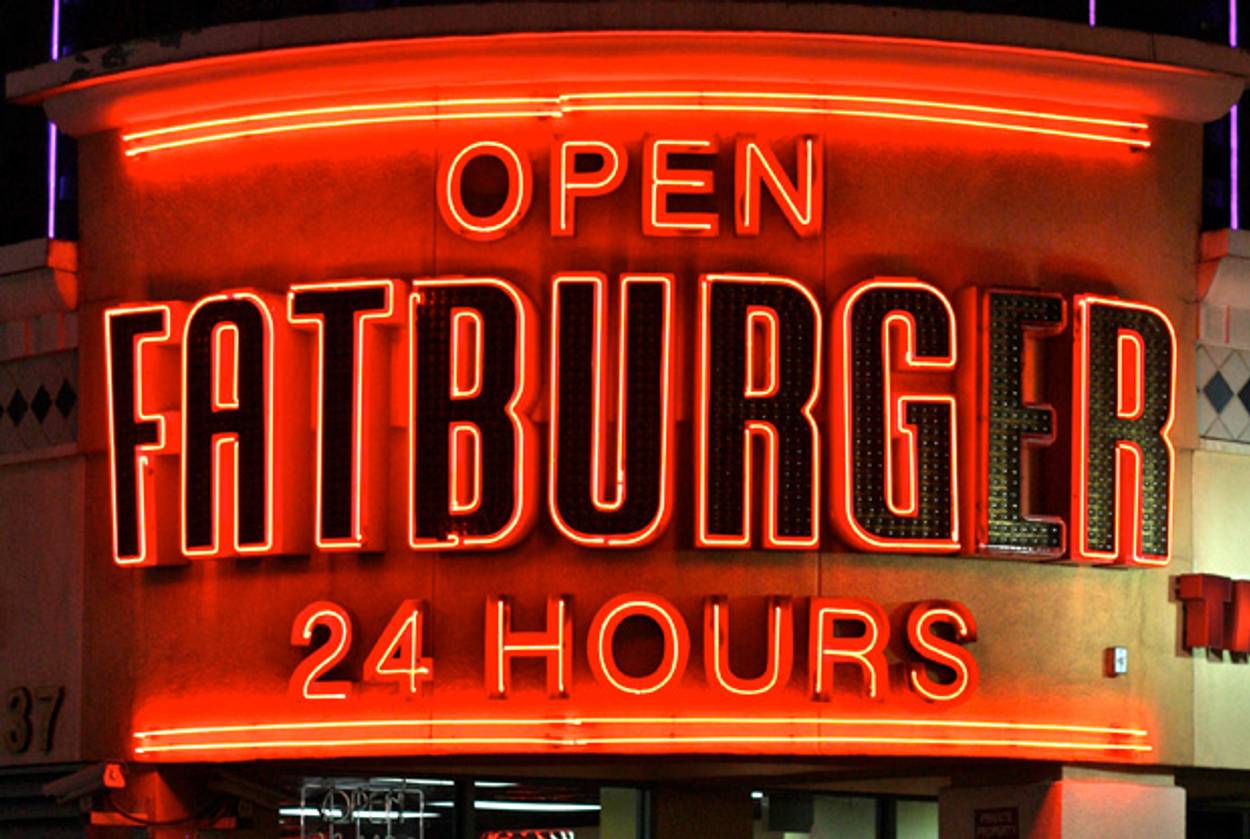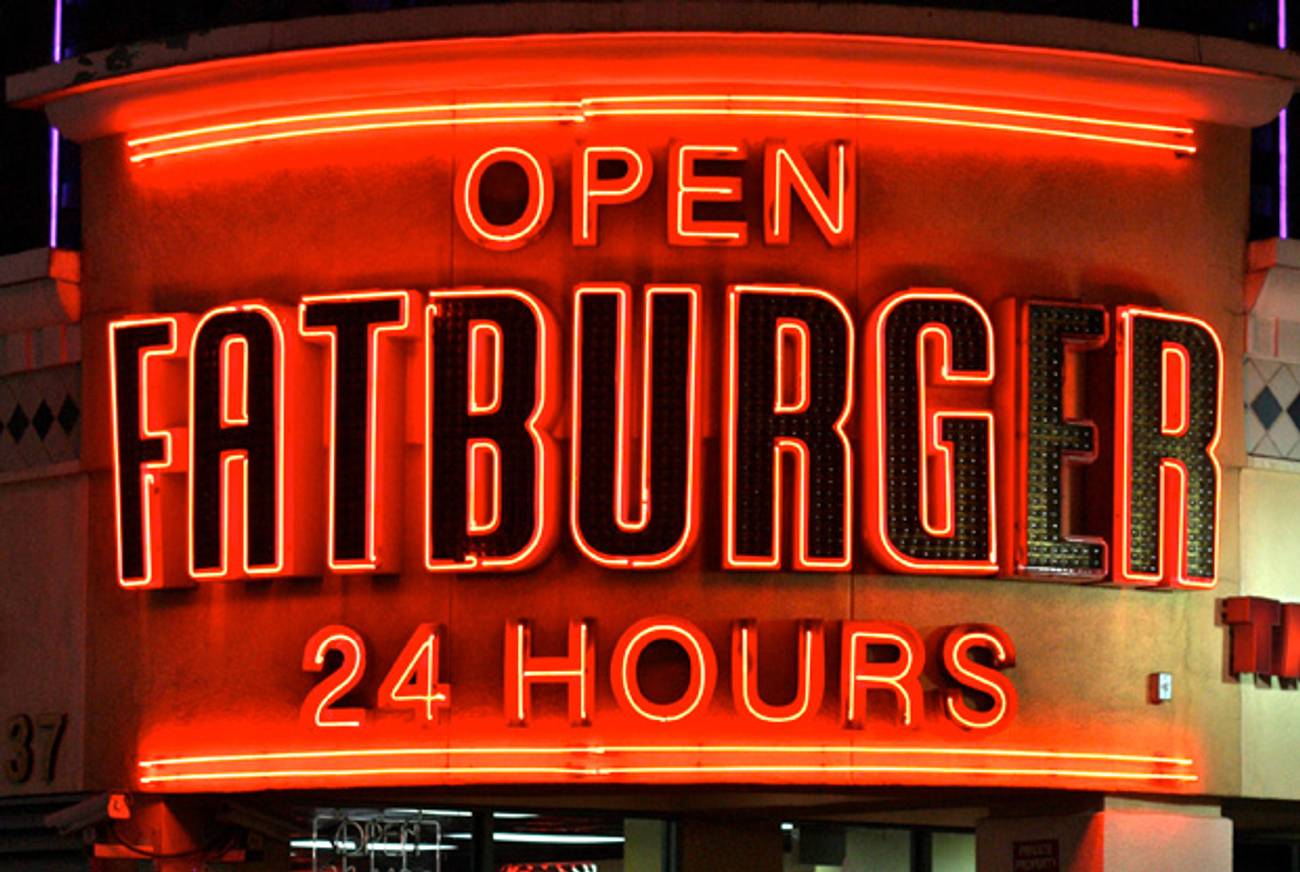Big Eater
Food-obsessed Jews, including an obese matriarch, are subtly rendered in Jami Attenberg’s The Middlesteins




The Middlesteins: The name of the family at the heart of Jami Attenberg’s new novel makes an audacious quasi-sociological claim. Here, it promises, we will see the representative American Jewish clan, just as in Middlemarch George Eliot set out to show us a representative English town. And the strength of Attenberg’s modest but effective novel is that she convinces us, sometimes to our own chagrin, that the way the Middlesteins live is, indeed, the way we live now. Here is a b’nei mitzvah featuring twins performing a choreographed hip-hop performance, a shul populated by families who are good-but-not-great friends, and a suburban landscape dominated by strip malls—in this case, it’s Chicagoland, but it could just as well be New Jersey or L.A.’s San Fernando Valley. There are no rebels, freaks, activists, or artists to be found in this novel, just ordinary people doing their best to lead happy lives and mostly failing.
The stumbling block that undoes the Middlestein family is food—that American and American-Jewish obsession. The problem with food is that, unlike more exotic vices, it is simply everywhere: The strip malls are full of McDonald’s, the b’nei mitzvah features a dessert bar, “including a make-your-own sundae station and a bubbling chocolate fountain, surrounded by cookies, pound cake, and strawberries.” And for Edie Middlestein, the matriarch of the family, food has become more than a temptation. It is an animalistic obsession, which has inflated her to 300 pounds and given her life-threatening diabetes—none of which, to her children’s and grandchildren’s chagrin, makes her stop eating. Rachelle, her daughter-in-law, conducts a secret surveillance to figure out just what Edie does all day. She trails her in the car as Edie drives to a McDonald’s, then to a Burger King, then to a Chinese restaurant, throwing out the trash from her last stop at the next one. “She’s going to die, thought Rachelle. And I don’t know if we can stop her.”
The novel opens with Edie facing her second diabetes-related surgery, and her family’s angry and helpless reactions to her illness form the main plot. Edie’s husband, Richard, chooses this life-threatening moment to announce that he is leaving Edie after decades of marriage. This provokes the fury of their two children: Robin, a single schoolteacher whose difficult personality resembles Edie’s own; and Benny, a family man and the father of the b’nei mitzvah twins. Rachelle, Benny’s wife, reacts with righteous anger to Richard’s abandonment, refusing to let him see his grandchildren while whipping her own family into a frenzy of healthy eating: At dinner, she “focus[es] on cutting her food into the tiniest of squares, which she would then chew thoughtfully and slowly, as if she were savoring every vitamin, as if she could feel each bite extending her lifespan.” But when it comes to food, there seems to be no happy medium. Yearning to escape the health-food regimen, Rachelle’s daughter Emily tries to sneak out of her bedroom window and ends up in the hospital.
As the story unfolds, Attenberg is constantly opening up its structure with flashes forward and backward, the most important of which try to answer the question that bewilders Edie’s family: How did she get to be so ravenous? These chapters are titled with Edie’s weight at various stages of her life, and they make clear that her appetite has been there from the beginning. As a child, we see in a prologue chapter, the 5-year-old Edie already weighed 62 pounds: “Her arms and legs, once peachy and soft, had blossomed into something that surpassed luscious. They were disarmingly solid. A child should be squeezable. She was a cement block of flesh. She breathed too heavy, like someone’s gassy old uncle after a meal.” Yet when she throws a tantrum, her mother soothes her with a hunk of rye bread. Already, Attenberg shows, food has become a solution to life’s problems, a refuge from uncontrollable emotions. “Food,” she writes, “was a wonderful place to hide.”
The real mystery, then, is why she needs such a shelter so badly. Another novelist might have insisted on tracing Edie’s appetite to a single trauma; Attenberg, wisely and empathetically, realizes that the forces that shape our characters are more subtle and harder to pin down than that. Edie’s anger makes her eat and her weight makes her angry; by the time she is a teenager, she has become that familiar type, a “difficult person.” In one excruciating scene, we see Edie bickering with her family at a McDonald’s, stealing her children’s food and wishing she could run off and be alone with her McRib sandwich: “Suddenly she felt like an animal; she wanted to drag the sandwich somewhere, not anywhere in this McDonald’s, not a booth, not Playland, but to a park, a shrouded corner of the woods underneath shimmering tree branches, green, dark, and serene, and then, when she was certain she was completely alone, she wanted to tear that sandwich apart with her teeth.” No wonder her daughter, Robin, becomes a semi-alcoholic: Better to drink than to eat like that.
But Attenberg insists that we see the good in Edie as well. A lawyer and political activist, she has qualities that, in a man, might lead to a stellar career: She is tough, hard-charging, and smart. If there was a pivotal mistake in her life, Attenberg suggests, it was getting married, condemning herself to a life of domesticity that at heart she didn’t really want. We see Edie meeting Richard at a moment when her father is dying, leaving her without her usual toughness, and longing for Richard’s vitality—typically, he strikes her as “full of something Edie found herself wanting to devour.” As in Delmore Schwartz’s story “In Dreams Begin Responsibilities,” the reader sees these scenes of courtship and wants to yell at the characters not to get married, not to ruin their lives.
At the same time, Attenberg also allows us to sympathize with Richard, whose departure might have been ill-timed but still seems justified. “There was nothing left inside,” he tells Benny, trying to explain the toll of a lifetime of marriage. “I was a bag of bones. There was nothing else in there. Whatever kept me standing, that was it, that was all that was left.” “You didn’t put up a fight,” Benny objects, to which Richard responds, “I’m trying to be respectful here, but have you not met your mother? You can’t fight her.” The reader knows just what he means, and we root for Richard as he tries, comically but not unsuccessfully, to start dating again and establish a new life.
Edie, too, is sending up green shoots of hope, even as her body drags her down. Appropriately enough, she starts a romance with the owner of her favorite Chinese restaurant, who finds feeding her not a burden but an erotic game. Yet too many pressures have been set up for The Middlesteins to settle into a simple happy ending. Attenberg’s insightful character study of anger, resentment, and appetite offers, instead, the kind of mixed ending that life usually gives us—and that makes The Middlesteins a weightier novel than it first appears.
***
Like this article? Sign up for our Daily Digest to get Tablet Magazine’s new content in your inbox each morning.
Adam Kirsch is a poet and literary critic, whose books include The People and the Books: 18 Classics of Jewish Literature.
Adam Kirsch is a poet and literary critic, whose books include The People and the Books: 18 Classics of Jewish Literature.